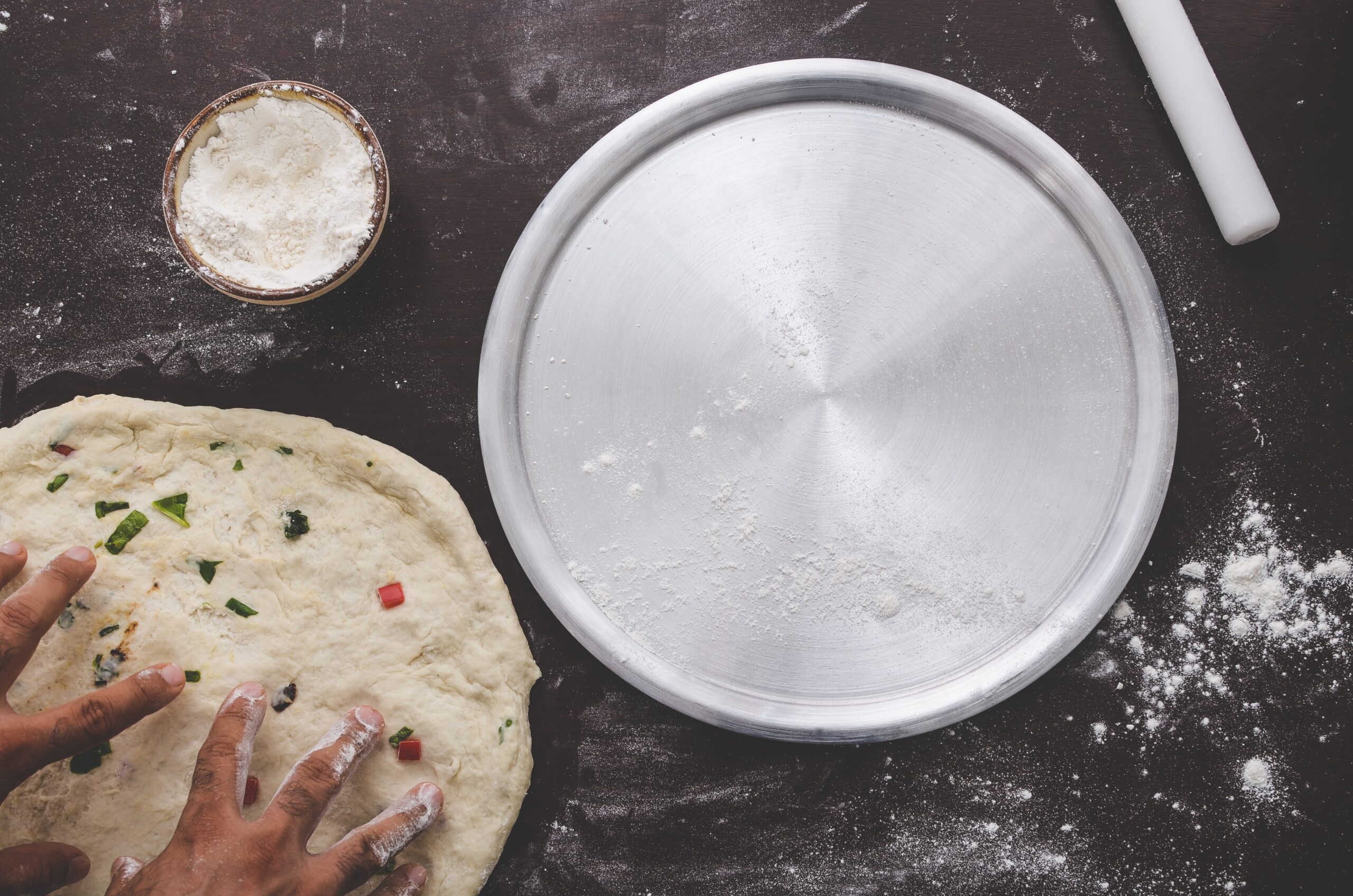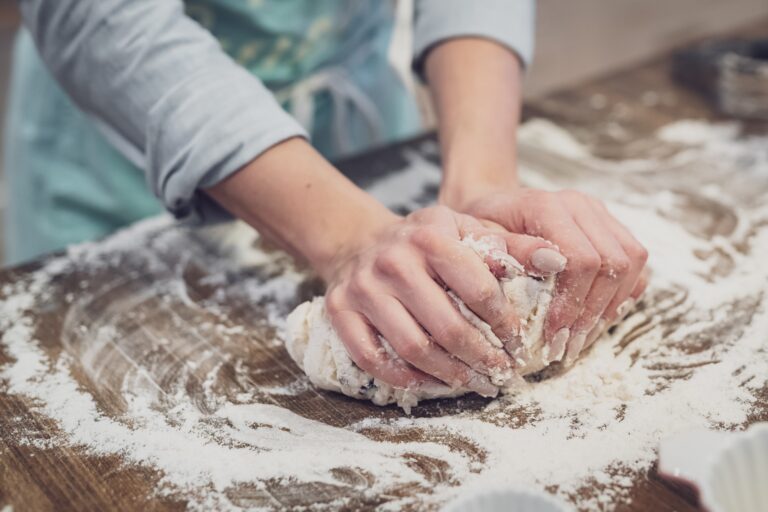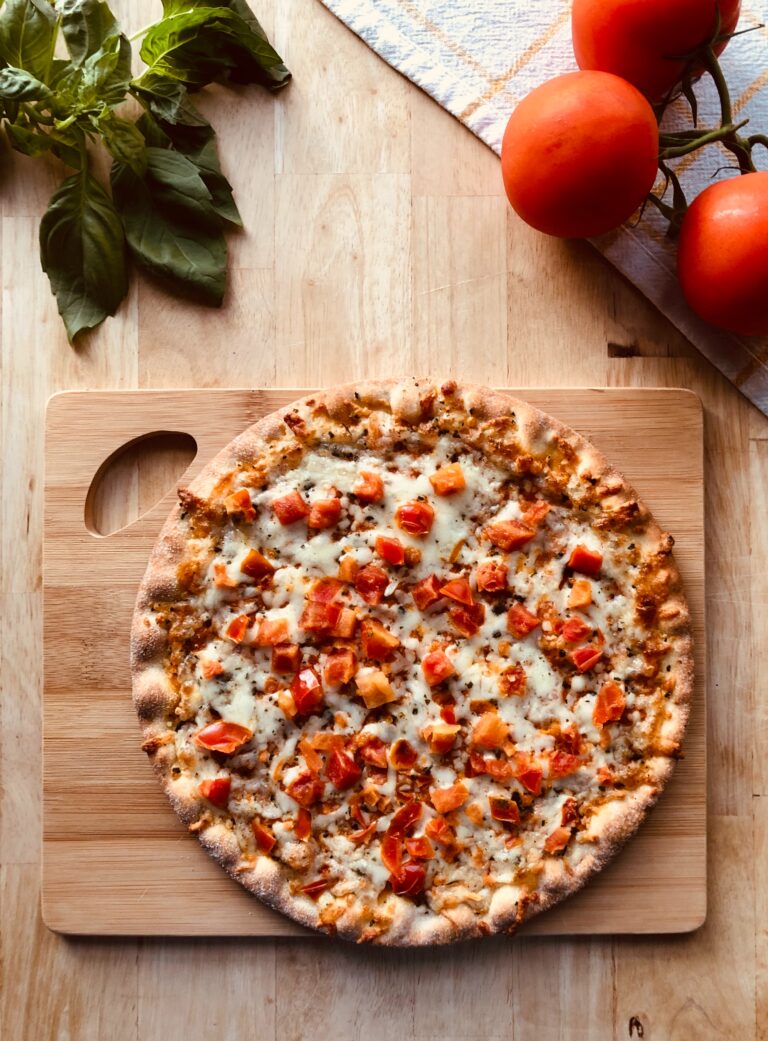Gluten-Free Pizza Crust Recipe
We want to satisfy your pizza cravings while sticking to a gluten-free diet. Look no further! In this article, we’ve got the perfect recipe for a delicious gluten-free pizza crust.
You’ll learn to choose the right flour blend, mix the ingredients, and shape the crust for that perfect texture. With our step-by-step instructions, you’ll be able to enjoy a crispy and flavorful homemade pizza that’s completely free of gluten. Let’s dive in and discover the innovative world of gluten-free pizza making!
Choosing the Right Gluten-Free Flour Blend
When choosing the right gluten-free flour blend, it’s essential to consider the texture and taste of your desired crust. There are different types of gluten-free flours available that offer unique benefits for your pizza crust.
One popular choice is almond flour, which lends your crust a rich and nutty flavor. It also provides a moist and tender texture, making it an excellent option for those seeking a softer pizza base.
Another option is rice flour, which offers a light and crispy texture. It has a neutral taste, allowing other flavors to shine through. Rice flour is also easy to work with and readily available in most grocery stores.
For those looking for added nutrition, quinoa flour is an innovative choice. It offers a subtle nutty flavor and contains essential amino acids and fiber. Quinoa flour can give your crust a slightly denser texture while providing valuable nutrients.
Lastly, coconut flour is known for its high fiber content and natural sweetness. It creates a fluffy crust with a delicate coconut aroma. However, it absorbs more liquid than other flours, so adjusting the recipe accordingly is essential.
Consider experimenting with different combinations of these gluten-free flours to find the perfect blend that suits your preferences. Always read labels carefully to ensure that your flours are certified gluten-free for optimal results in creating your delicious pizza crusts!
Mixing the Ingredients for the Pizza Dough
After you’ve combined all the ingredients, mixing them until a smooth dough forms thoroughly is essential. This step is crucial in developing the structure and texture of your gluten-free pizza crust. The kneading technique plays a vital role in activating the proteins in the flour blend, allowing them to bond and create elasticity.
First, place your mixed ingredients onto a clean surface lightly dusted with gluten-free flour. Use the heel of your hand to push down on the dough while simultaneously pushing it away from you. Fold the dough over itself and repeat this process for about 5-10 minutes or until it becomes smooth and elastic.
Troubleshooting common dough problems can help ensure a successful outcome. If your dough feels too sticky, gradually add small amounts of flour until it reaches the desired consistency. Conversely, if it feels too dry, incorporate small amounts of water or oil to moisten it.
Remember that gluten-free dough tends to be more delicate than its traditional counterpart, so avoid over-kneading, as it may lead to a rigid and dense crust. Experimentation may be necessary to find the perfect balance between kneading time and desired texture.
Rolling Out and Shaping the Pizza Crust
To achieve the desired thickness and shape, gently roll the dough using a rolling pin. This step is crucial in creating a gluten-free pizza crust that is both delicious and visually appealing. As you knead the dough, you’ll notice its pliability increasing, allowing you to mold it into your preferred shape.
Here are four key points to keep in mind as you roll out and shape your pizza crust:
- Use light pressure when rolling out the dough to avoid tearing or overworking it.
- Aim for an even thickness throughout the crust to ensure even baking.
- Experiment with shapes, such as round, rectangular, or oval, to add variety to your pizzas.
- Add herbs and spices directly into the dough during kneading for added flavor.
You can elevate the taste profile of your gluten-free pizza crust by incorporating fresh herbs like basil or oregano and aromatic spices like garlic powder or red pepper flakes. These additions will infuse every bite with bursts of savory goodness that will leave your taste buds wanting more.
Pre-Baking the Crust for a Crispy Texture
For a crispy texture, it’s essential to pre-bake the crust before adding toppings. Pre-baking techniques can make all the difference in achieving a golden-brown crust that is both flavorful and satisfying.
When you pre-bake the gluten-free pizza crust, you partially cook it before adding your favorite toppings. This step helps ensure the crust becomes crisp without becoming soggy or undercooked.
Roll out the dough to your desired thickness and shape to pre-bake your gluten-free pizza crust. Place it on a baking sheet lined with parchment paper or a silicone mat. Preheat your oven to a high temperature of about 450°F (232°C) and let it heat up thoroughly before placing the crust inside.
Once the oven is ready, place the dough into the hot oven and bake for 10-12 minutes or until lightly golden brown. Keep an eye on it, as cooking times may vary depending on thickness and oven temperature consistency.
After pre-baking, remove the crust from the oven and let it cool slightly before adding your favorite sauce, cheese, and toppings. Then, please return it to the oven for another round of baking until everything is melted and bubbly.
Topping and Baking the Gluten-Free Pizza
Once you’ve pre-baked the crust, it’s time to add your favorite toppings and bake the pizza until everything is melted and bubbly. Get creative with your gluten-free pizza by choosing from various topping options that will take your taste buds on a flavorful journey. Whether you prefer classic combinations or want to experiment with unique flavors, there are plenty of delicious choices to explore.
To help you get started, here’s a table showcasing some mouthwatering topping ideas for your gluten-free pizza:
| Topping Options | Description |
|---|---|
| Margherita | Classic combination of tomato sauce, fresh mozzarella, and basil leaves. |
| BBQ Chicken | Tangy barbecue sauce topped with grilled chicken, red onions, and cilantro. |
| Veggie Supreme | A medley of colorful vegetables like bell peppers, mushrooms, olives, and spinach. |
| Mediterranean | Creamy hummus spread as the base topped with artichoke hearts, sun-dried tomatoes, feta cheese, and Kalamata olives. |
Now that you know the possibilities for toppings, let’s discuss alternative baking methods for your gluten-free pizza. If you’re looking for a quicker option without compromising taste and texture, try using a cast iron skillet or grilling the pizza on a preheated stone or grill pan. These methods can give your crust a crisp exterior while keeping it tender.
So go ahead and unleash your creativity in the kitchen! You can enjoy a gluten-free, innovative, and delicious pizza with these topping options and alternative baking methods.






